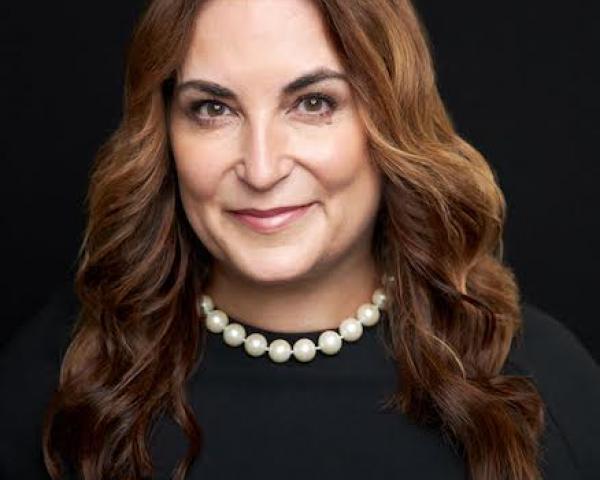A Lesson From a Serial Innovator
We get too focused on the technology. Disruptive innovation comes from the strategy that uses technology, not the technology itself.

We get too focused on the technology. Disruptive innovation comes from the strategy that uses technology, not the technology itself.

Get Involved
Our authors are what set Insurance Thought Leadership apart.
|
Partner with us
We’d love to talk to you about how we can improve your marketing ROI.
|

Shahzadi Jehangir is an innovation leader and expert in building trust and value in the digital age, creating scalable new businesses generating millions of dollars in revenue each year, with more than $10 million last year alone.
With big data, we can better understand the causal paths between data generation and an event. There becomes no need for stereotyping.

Get Involved
Our authors are what set Insurance Thought Leadership apart.
|
Partner with us
We’d love to talk to you about how we can improve your marketing ROI.
|
A CEO says he can run his company entirely off his smartphone, and customers can interact with the company entirely via apps and chat, too.

This week will be quick, because I'm at the AAIS Main Event in beautiful Amelia Island, FL (a rough job, but somebody has to do it), where I delivered a talk to the general session and held a breakout.
The best example I've seen of innovation thus far here came from Art Meadows, CEO of Panhandle Farmers Mutual Insurance, a little company that would hardly be expected to be on the cutting edge. Panhandle is based in Moundsville, WV, population 8,813. TripAdvisor's list of Things to Do in Moundsville puts at #1 the West Virginia Penitentiary, which closed in 1995. No. 3 is Archive of the Afterlife: The National Museum of the Paranormal. No. 8 is Foster Glass, which left town in 1986. Yet Meadows told the general session that he can now run his company entirely off his smartphone and that customers can interact with the company entirely via apps and chat, too.
If the 60-something Meadows can be so advanced in rural West Virginia, can't the rest of us at least do somewhat better?
Two articles to call to your attention:
"An Insurtech Greenhouse: Future US-UK Regulatory and Fintech Collaboration," by our friend Paul Thanos, director of the office of finance and insurance industries at the Department of Commerce and a fellow at the Woodrow Wilson International Center for Scholars. It's a very smart piece laying the groundwork for U.S. companies beyond our shores. You'll recognize the name of the guy quoted at the top of the piece.
"Teaching Watson the Urban Dictionary Turned Out to Be a Huge Mistake." This one offers a bit of comic relief but also a lesson. The comic relief: Once Watson absorbed the dictionary, it sometimes responded to queries with an answer like "bull****." The lesson: Every innovation has unintended and unforeseen consequences.
Cheers,
Paul Carroll,
Editor-in-Chief
Get Involved
Our authors are what set Insurance Thought Leadership apart.
|
Partner with us
We’d love to talk to you about how we can improve your marketing ROI.
|

Paul Carroll is the editor-in-chief of Insurance Thought Leadership.
He is also co-author of A Brief History of a Perfect Future: Inventing the Future We Can Proudly Leave Our Kids by 2050 and Billion Dollar Lessons: What You Can Learn From the Most Inexcusable Business Failures of the Last 25 Years and the author of a best-seller on IBM, published in 1993.
Carroll spent 17 years at the Wall Street Journal as an editor and reporter; he was nominated twice for the Pulitzer Prize. He later was a finalist for a National Magazine Award.
It’s show-me time for startups battling for the dwindling pool of venture capital funds for cybersecurity startups.

Get Involved
Our authors are what set Insurance Thought Leadership apart.
|
Partner with us
We’d love to talk to you about how we can improve your marketing ROI.
|

Byron Acohido is a business journalist who has been writing about cybersecurity and privacy since 2004, and currently blogs at LastWatchdog.com.
Here are three key developments that insurers should incorporate into their evolution on enterprise risk management (ERM).

Get Involved
Our authors are what set Insurance Thought Leadership apart.
|
Partner with us
We’d love to talk to you about how we can improve your marketing ROI.
|

Henry Essert serves as managing director at PWC in New York. He spent the bulk of his career working for Marsh & McLennan. He served as the managing director from 1988-2000 and as president and CEO, MMC Enterprise Risk Consulting, from 2000-2003. Essert also has experience working with Ernst & Young, as well as MetLife.
Like TV, insurance is changing at its core because of a reduction in “viewership” and the changing demographics of younger generations.

Get Involved
Our authors are what set Insurance Thought Leadership apart.
|
Partner with us
We’d love to talk to you about how we can improve your marketing ROI.
|

Denise Garth is senior vice president, strategic marketing, responsible for leading marketing, industry relations and innovation in support of Majesco's client-centric strategy.
Common-sense tips can lead to better outcomes for injured workers — and, ultimately, lower costs for payers.

Get Involved
Our authors are what set Insurance Thought Leadership apart.
|
Partner with us
We’d love to talk to you about how we can improve your marketing ROI.
|

Kimberly George is a senior vice president, senior healthcare adviser at Sedgwick. She will explore and work to improve Sedgwick’s understanding of how healthcare reform affects its business models and product and service offerings.

Mark Walls is the vice president, client engagement, at Safety National.
He is also the founder of the Work Comp Analysis Group on LinkedIn, which is the largest discussion community dedicated to workers' compensation issues.
Drivers are Asian buyers interested in the U.S. and insurers expanding into technology, asset management and ancillary businesses.

 Major deal trends included:
Major deal trends included:
 See also: How to Build ‘Cities of the Future’
Deals market characteristics
See also: How to Build ‘Cities of the Future’
Deals market characteristics
 See also: Minding the Gap: Investment Risk Management in a Low-Yield Environment
Implications
See also: Minding the Gap: Investment Risk Management in a Low-Yield Environment
Implications
Get Involved
Our authors are what set Insurance Thought Leadership apart.
|
Partner with us
We’d love to talk to you about how we can improve your marketing ROI.
|

John Marra is a transaction services partner at PwC, dedicated to the insurance industry, with more than 20 years of experience. Marra's focus has included advising both financial and strategic buyers in conjunction with mergers and acquisitions.
Remember what email did to the fax machine? It won’t take long for email to meet a similar plight as mobile chat supplants it.

Get Involved
Our authors are what set Insurance Thought Leadership apart.
|
Partner with us
We’d love to talk to you about how we can improve your marketing ROI.
|

Richard Smullen is the founder and CEO of Pypestream, the leading B2C messaging platform infused with AI and deep learning. Prior to Pypestream, Smullen co-founded Genesis Media, the leading online video and attention measurement platform for editorial based publishers.
The possibility of hacking medical devices -- science fiction as recently as two years ago -- is now becoming a major problem.

Get Involved
Our authors are what set Insurance Thought Leadership apart.
|
Partner with us
We’d love to talk to you about how we can improve your marketing ROI.
|

Byron Acohido is a business journalist who has been writing about cybersecurity and privacy since 2004, and currently blogs at LastWatchdog.com.